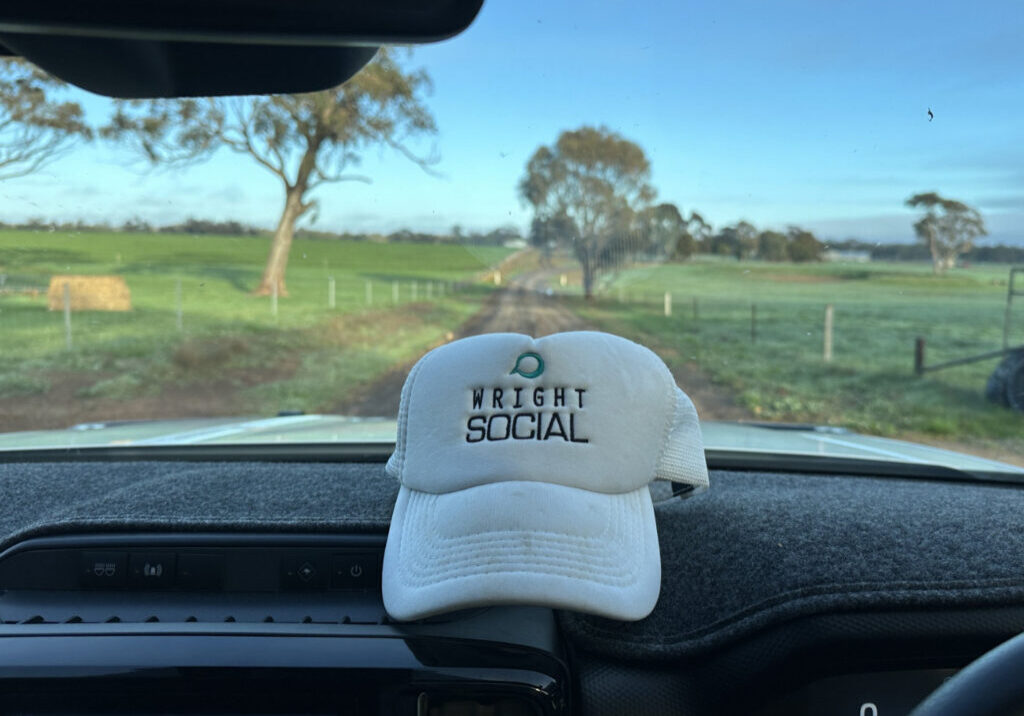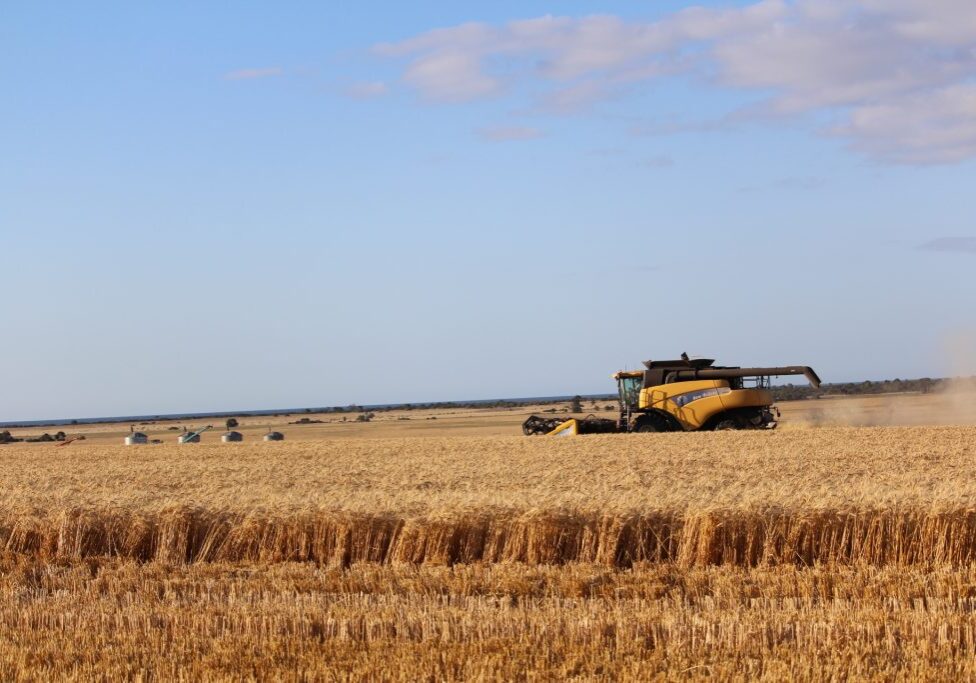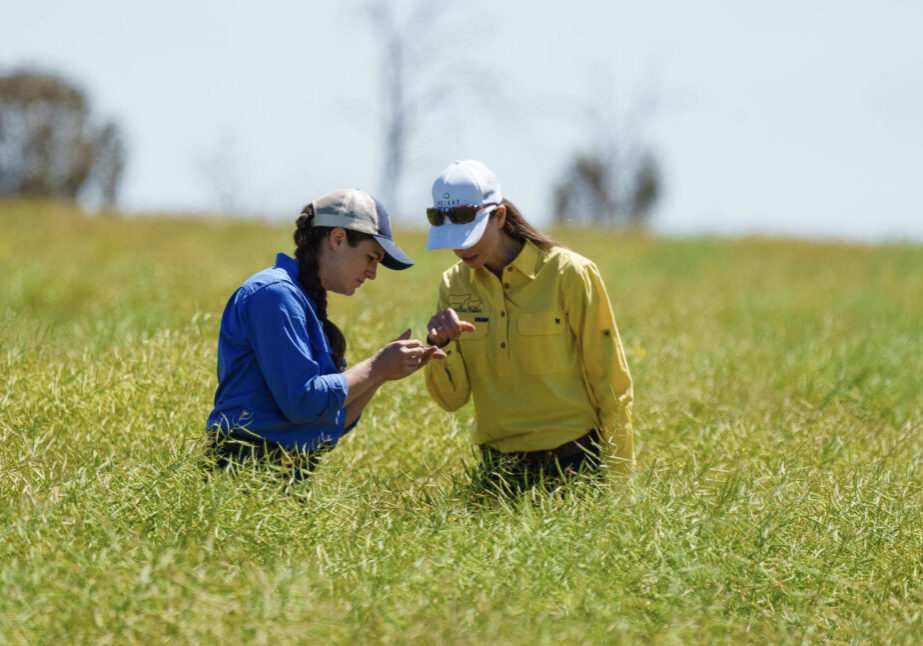William Siebler is an expert on Direct Response Marketing and a self-described Marketing Nerd.
Described as “The Human Profit Detector” he can’t help himself; every time he walks into a business, he must analyse all the things it’s doing right and all the things it’s doing wrong.
Heidi Wright, Director of Wright Social, speaks with William Siebler, delving into nine tips for overcoming price-based competition in your agricultural business for untapping its potential.

Heidi Wright: William, thank you so much for joining us.
William Siebler: Thank you for having me
Heidi Wright: William, you’re a bit of a marketing nerd. We were just chatting about how you’ve always had this relentless passion and drive for marketing. I hear that a colleague once described you as “the human profit detector”, because you love to look at a business and look at the untapped growth opportunities. Is that right?
William Siebler: Yeah, I love it. I can’t actually walk into any business without seeing things that they’re not doing right. Whether it’s a retail shop, Bunnings, doesn’t really matter what it is, my mind just sort of goes there, because there is just so much in in any business. I’ve yet to come across a business that has tapped its potential.
Heidi Wright: Awesome. Well, that’s a good thing, isn’t it? Weaknesses evolve and they grow, and there’s always opportunity. So, I guess it’s a matter of working out which opportunity do we select? Which is going to give us the biggest impact for what we need now, but also in the future too? So exciting to have you on board.
I also saw that you worked on the marketing of Kodak’s digital products to traditional retail, like your role was to sell Kodak digital products through traditional retail back in 2000. How have things changed since then? You would have seen massive changes since those days.
William Siebler: Yeah, enormous changes. Look, that was a tough role that I ended up in because digital cameras were coming in. Kodak made incredible profits on film, and I was sort of caught between two divisions and arguing, “hey, we’re going to embrace digital cameras. It’s the future, and film’s not”, but that was a very difficult argument to run. Unfortunately for Kodak, I left at that time when I realised I was going to have to kill myself to win that argument. I just said, “well, look, give me a package. I’m going to go and do something different”, because within that environment, I couldn’t win the argument. Unfortunately for Kodak, they didn’t embrace digital technology, and they now barely exist. There’s just some intellectual property and patents and things, but the company itself basically doesn’t really exist anymore. So, it’s a shame, but it’s a good lesson that if you don’t embrace change, no matter how successful you are, you can be out of business really quickly.
Heidi Wright: It’s such a powerful lesson, and the fact you experienced that directly too in your role is quite unique. Well, we’re here to talk about how to overcome price-based competition.
William Siebler: Yes.
Heidi Wright: When it comes to the topic of overcoming price-based competition, the discussion could take many forms and different roads, and particularly because agriculture is so diverse. So, there will be members of this group selling or marketing solutions and services, which have a very clear value proposition, and then there’ll be others that sit in the category of what might be considered commodities. But I do think there’s a few fundamentals that can apply to overcoming those objections around price, and it’s those fundamentals that I’d like to walk through with you
William Siebler: Yes, excellent.
Heidi Wright: So, price will always come up in a sales conversation but often, in my experience, it’s not the issue, but it’s an indicator that something else is going on. What are your thoughts around that?
William Siebler: I’ve got a few thoughts, a couple things that are worth saying. One, the biggest issue with price usually exists in the mind of the business owner. Two, yes, there are price shoppers, but based on the evidence that I’ve seen, it’s no more than 20% of the market. And consumers and buyers aren’t experts at buying everything.
So, often you’ll go and buy something for the first time. Let’s say you started a new farm and you’re going to go and buy a tractor for the very first time. You don’t necessarily know what’s good, bad or indifferent. Is this one any good? This one that’s twice the price, what’s the difference? If you don’t understand the difference, then the only thing that you’ve got to compare them on is price. It’s not the right basis for making a decision, but because you don’t know, or because let’s say that company selling the tractor at double a price, if they don’t provide great reasons as to why that’s a much better investment, then it’s going to be harder for them to win sales.
Heidi Wright: They can’t make assumptions, can they? Like often also established brands go “oh, they already know us. There’s that trust factor there. They’re educated. If they’re calling us, they potentially want to learn more, and they already know about us. So, we just need answer their questions”.
But it’s taking that step back and saying actually, “no, it’s more than answering their questions, isn’t it?” It’s highlighting asking the right questions, so you have the opportunity to highlight what that unique value proposition is.
William Siebler: Yeah, exactly right. And you know, everyone’s experts on their own stuff, but that often means that you will overlook things that are obvious to you, but not necessarily obvious to a client.
And the other thing that can happen is that you can get stuck in a features type mindset. So, you know, “this tractors has such and such rigid tires or something”. But, yeah, okay, what does that mean to me as a client? Well, it might mean that they last three times as long, so you only have to change your tires every three years instead of every year, which you know, that has a few benefits. One is you don’t spend so much money on tires. So, you don’t have so much downtime on your tractor when you might need to be using it. So, yeah, we can overlook obvious things, and we shouldn’t.
Heidi Wright: Yeah, totally, and I think that all comes down to understanding your customer. One thing we do with any new client that we onboard is host an audience analysis workshop, which is a two hour workshop with the team, often the owner and maybe sales staff. We actually establish personas, and then we will work out for each persona, what are their challenges? What are their pain points? What are their deep motivations? Why do they think the way they think? What makes them tick? What frustrates them? You know, in really good detail, so we can better understand what are their motivations to purchase, and what are their stumbling blocks to purchase.
And then it makes it far easier as a marketer to then go and educate them, and through social media, we have that opportunity to address objections early in the decision-making process, so by the time they are picking up that phone, they’re at least educated and have some level of understanding for what the value proposition is.
William Siebler: Yeah, that’s quite right. There was a very early advertising guy by the name of Robert Collier. He wrote a book that you’d have to probably be a marketing nerd to want to read, but one of the things that he said in it was “enter the conversation going on in the mind of the client”. So that’s always what we’re trying to do, and if you can keep that in mind, because essentially, we’re trying to develop massive empathy and understand the world through their eyes.
It’s easy to say, it’s harder to do it in practice, but if we continue to remind ourselves, “what’s the conversation going on in my mind?” If you’re a farmer, and the weather conditions are terrible, you know, you’ve had three years of drought, the conversation going on in your mind is, “is the bank going to take my house? Am I going to lose my farm?” You know, that’s the conversation. If you’re trying to offer them something that will help them, then you have to address that conversation in the way that you’re communicating.
Heidi Wright: Love it. You articulated that so well. So, you talk about nine tips for overcoming priced based competition and I’d like to go through them with you. Before we do, I’d like to get from your experience, having dealt with many businesses on the subject of price, what are the common objections you see customers make around price? What are the common ones?
William Siebler: Well, the most common one is they look at a couple of prices, because most of the time people have got more than one price for something, and they just want to know if one’s more than the other. Well, hopefully they are. Sometimes they just go with a cheaper quote, but hopefully they ask “how come yours is 20% more?” That the most common question. So, they want to know why the difference, and are there really good reasons for the difference? If there are, they may well be open to it. As I said, the majority of the market doesn’t shop on price alone. They want to understand why. What’s the difference?
Heidi Wright: Yeah, gotcha. And so, we know logic and emotion are both powerful aspects when it comes to consumers making purchase decisions, and I guess some will argue, we bind emotion and justify on logic. So, when it comes to explaining the 20% of why we are higher or what our value proposition is, how much should we be considering and playing into the factors of emotion and logic?
William Siebler: So, we’re definitely using both. Some people might think that emotion doesn’t apply in business and business to business type transactions. That’s not true. The only purely rational decision makers as I understand it are engineers. So, if you’re selling to them, you’ve got to sell pretty much purely rationally, but everyone else to some extent is motivated through emotion. There’s a risk in every transaction, you know, that I may not get what I think I’m getting or if it goes bad, heaven forbid, I’m going to look silly. That’s a massive risk, and that blocks a lot of purchase. Now if I feel like there’s a risk I could look silly by buying these, the safe thing for me to do so is not.
Heidi Wright: That’s a really interesting one, isn’t it?
William Siebler: Absolutely.
Heidi Wright: Yeah, a big one I think that often is underestimated in that sales conversation, too.
William Siebler: It’s like switching products too. So, if you’ve been dealing with a supplier for a certain number of years, and someone comes along, you’re risking that relationship that’s served you well for a period of time. Changing to something new, you know, has risk that has to be addressed in order to make the sale.
Heidi Wright: Yes, great. So, let’s go through your nine tips, we may not get through all of them. We’ll start at the top and you can walk us through one by one, and if an example comes to mind, great, it doesn’t have to be ag related. We take a lot from understanding how different industries work and sort of apply that into the agricultural sphere.
William Siebler: Okay. So, the first one is about selling to the clients and niches, who can benefit the most from what you do. So, if you look at any industry, or even, for example, if you took all of the farms that are out there, you could divide them and probably you’d find that the top 20% of farms around Australia probably produce 80% of the revenue. So, if you are selling, say premium equipment, premium tractors and things like that, you may well want to target that particular segment, because they’re the ones that are going to benefit the most. If you had a premium product, and you were selling it to someone who is on a week-by-week proposition as to where they kept their farm, it’s got to be really difficult on price. You know, he’s going to come into it in that situation just because of their situation. So that’s the first one.
The next one is about basically presenting your offer so that the client can see the return on investment. So, I like to aim for a 10 times return on investment, but anywhere between four to 10 times the return that you’re putting in. So, for example, if you had a higher quality fertiliser that was going to give you a greater yield on your crop, you know, it might be that you’re paying a little bit extra, but maybe you’re going to get one and a half or two times the crop that you otherwise would have got. So, there’s some multiple of what they’re investing coming back, and you can help them to understand that. It’s important to say you can’t just state it to them. You need to do that collaboratively with them so they can see how that’s derived. So, using their own figures makes a massive difference.
The underlying problem that you’re solving through your product, so even if we go back to that example of fertilising, you’re not fertilising for the sake of fertilising. You’re fertilising so that you can get the best crop or the highest quality produce that you could possibly get. So that’s the underlying problem, and it’s a profit, it’s a business viability type issue. So, there’s much more to it than just a product or service that you’re selling.
Another tip is to break your pricing down into an easy frame of reference. So, often we’ll see things sold, as you know, for the cost of a cup of coffee a day, the cost of a latte. All digital market use that at the moment. It’s probably been done overkill. But you know, basically you’re just presenting the cost at it’s the lowest possible price, and it just makes it easier to say yes. So, I’d say a cup of coffees is $4, so I can say $120 a month, or I can say for the price of a cup of coffee each day. So, the two things, it’s the same price, but it’s just presented in different ways.
One of my personal favourites is a thing called the apples to oranges comparison. And so, this is how you win clients because if someone’s got two identical things, let’s say they’re getting a piece of equipment, and to all intents and purposes they look identical. That’s when your price comes into the issue. So, your job, because that’s an apples-to-apples comparison, what you want to do is you want to have other reasons, other value, other things that you offer, that mean that they can’t directly compare.
A great example of that, most people are probably familiar with Bunnings. Bunnings, you know, there’s a bit of smoke and mirrors behind their marketing, but they’re very good at it. You know, the reason that you can’t compare the majority of their products on price is because that model doesn’t exist anywhere else. So, Bunnings has a lot of exclusive models. So, it might be identical to another one, but it’s got a different name and number on it. So, that’s an apples to oranges comparison, and means that they can do that, you know, under-pricing challenge with confidence.
Next one would be reversing client risk. So, we sort of touched on it earlier. Every time there’s a purchase, there’s a risk that the product or service won’t be as good as the company says it is, that I’ll look silly, you know, and that’s a massive risk.
So, the way to address that is to have some form of guarantee around what you’re doing. You know, pretty much by law in Australia anyway, you’ve got to guarantee stuff. If you sell something, and it doesn’t do what it says it’s meant to then under trade practices, you know, you can get yourself in trouble. So, you’re kind of obliged to guarantee stuff. I would say, well, turn it into a marketing advantage. Make a powerful guarantee. Stand behind your product or service. The potential clients feel that confidence and it just means they’re much more likely to become your clients.
Next one is a unique process, so a system for doing what you do. There is a company, I believe it’s Monsanto, but someone please correct me if I’m wrong. You know, they have their own custom grain and fertilising systems is my understanding. So, it’s a unique system for doing what they do, and therefore, you can’t actually get that anywhere else. So, you can actually turn the different elements of what you do into your own system, give it a name, and it doesn’t have to be shatteringly unique, but just by simply putting it together and giving it a different name, you transform it into something different, which makes it hard to compare on price.
Heidi Wright: Love it. We see a lot of digital products come out like that.
William Seibler: Absolutely
Heidi Wright: Or you know, how I went from farmer to innovator. It’s more common, obviously, in the non ag space, but they’ll look at their own lives, how they got from A to B, they’ll document that process, and then they’ll teach it as their unique process, which I find quite fascinating that they’re able to put a price tag on that.
Yeah, and the other thing, I think with this unique process too, is it’s important here to recognise that people process information in different ways. So, the way we present that process to them is also important. So, we know that some of us are visual learners, some of us are oral learners, and to understand that means that, you know, we may present our process in a video and then also back it up with logic, I guess with a diagram. So, it’s interesting.
Do you think it also reduces the risk in their mind, like when you’re putting a process to them, it reduces the risk in that they have an opportunity to understand what they’re getting themselves into? I mean a service-based business is different to selling a product. We talk about service space. Often there’s a process to onboarding or a process that we will take you through with your marketing strategy, or with your grazing management plan, or whatever that may be. If they can see that process, do you feel it sort of reduces that risk in a way that what we don’t understand we fear?
William Siebler: Yeah, it does because it shows them that you’ve got a plan to sort of take them from point A to point B. You’ve got a system that gives them confidence.
Heidi Wright: Yes.
William Siebler: And that confidence will close a lot of sales.
Heidi Wright: Brilliant. What number are we up to?
William Siebler: We’re up to number eight, which is around adding bonuses. So, often you can add bonuses that have sort of a high perceived value that may not cost very much. So, an example might be, let’s say you’re selling farm equipment. You might be able to go to a fertiliser company and say, “hey, you know, could you give me 20 bags of something or other to put with every item I sell?” The advantage of that is the person selling gets a bonus they can give with a purchase, but the fertiliser company potentially gets introduced to a new client. If they start using the product, maybe they’ll continue using it. So, bonuses can work, but bonuses could be as simple as extended support or unlimited email support, you know, doesn’t necessarily have to cost a lot, but it can still be valuable to the client.
Heidi Wright: Absolutely. I think that’s a really good one, and it does take some strategic thinking, but if you get it right, you potentially win a customer every time.
William Siebler: You can and depending on how far you can take it, like, I know, a marketing guy, what did he give away? I think it was a high-end Lexus. So, everyone who attended this particular seminar went in the draw to win a Lexus.
Heidi Wright: Right, that’s a very high value giveaway.
William Siebler: Yeah, it was and look, people came and purchased tickets to go to that conference just so they could have a chance of winning the car. So, you can take it to that level where the bonus actually becomes so attractive it’s almost like that’s your product and your actual product just goes with it. So, there’s a lot that you can do there with bonuses and have a lot of fun with them.
You know, you just check your economics. If you can get a small increase in your overall sales, you can fund that sort of bonus. People use travel, and in fact, that can be really powerful one, because you can go and buy travel vouchers for very little, but holidays have high perceived value. It’s a bit hard to go on holiday at the moment, but that’ll change. Hopefully, we’ll be travelling a bit more freely sometime later this year, probably.
Heidi Wright: Maybe if they put a caravan up for a prize, they’d get a few takers.
William Siebler: Absolutely. Absolutely, and the last tip is to provide options. So, don’t just have one option. Usually you’d present three, so you’d have your most basic, you’d have your premium, and then you’d have the one in the middle. Basically, you’re stacking it that way so that the people will take the one in the middle, which is an upgrade from basic, and sometimes you’ll see that referred to as “most popular” or “recommended” or “bestseller” or something like that. It’s important also to have that premium one there, because in any market, there’s always people who want the best. So, you need to make it available, or they can’t buy it.
Heidi Wright: Yeah. So, when someone says the common tagline, “it’s too expensive”, in your mind, what are they really saying? And what’s your tip for addressing this very common statement that many of us come across?
William Siebler: Yeah, so if someone says that it’s one or two things. They’re just a pure price shopper, which as we said, you know, isna maximum 20% of the market. Typically, what I would say to that is “is price the only thing that matters to you, when x, or whatever it is, you know, when buying a new tractor or whatever it might be?”
Heidi Wright: That’s a great question.
William Siebler: And then when you ask that question, you just shut up. First person to speak loses, basically, so, you need it to be the potential client. Majority of people say, “well, no”. It’s pretty awkward when you put that to them, because you’re basically saying, you know, in inverted commas “are you cheap?” You know, no one wants to say, “oh well, yeah. I am”.
So, what will happen is that they’ll say something, and often, there’ll be other stuff that’s underlying it that you need to address, and there’s some concern. So, maybe they couldn’t see the return on investment, or maybe there’s just something else. Maybe they’re just unsure, but we need to just try and dig into that, and that’s a good question to start the conversation. But you then might need to explore it a bit and ask them “you know, if the price were different, is there anything else that would prevent you from going ahead today?” And that can help to dig out whatever else may be going on.
Heidi Wright: That’s excellent. I’d really like to know, in the digital realm we’re in now, what advice you’re giving people when it comes to handling those price objections? Because often, you know, we can get on the phone to someone, and this plays out quite nicely. You know, your customer is present. They’re engaged in the conversation. More and more that conversation is moving into a WhatsApp group, a Facebook message, a comment on a Facebook post, where someone someone’s asking about the price. What some cautionary advice that you would give around taking that sales conversation within the digital realm we’re living in today?
William Siebler: So, sending messages back and forth electronically via email, text, WhatsApp, Messenger on Facebook, I don’t recommend too much of that, particularly if you’re discussing price. If the person’s serious, get on a phone call or get on a zoom call. If you can do face to face that’s even better, because you need to understand what they’re saying and what they’re not saying and you don’t get tone through an email. Like, we’ve all had emails and things where we go “gee, that person is grumpy today”, and you speak to them later and they’re like “no, I didn’t mean that at all”. So, we can read stuff. You know, we’ve seen the internet explode over tweets in US politics and things like that. We don’t necessarily know what people are saying, but when we actually speak with them or see them, we get a very good sense intuitively of what’s behind that. We can tell if they’re angry or if they’re just a straight down the line person. Some people just say things straight down the line. They’re not angry, that’s just the way that they are, so we need to understand that the only way to do it is personal.
Heidi Wright: Yeah, excellent. I’d share that advice too.
Well, William, this has been a really good discussion. I’ve really enjoyed this time walking through those tips, and I think they’re all very practical tips and they’re ones that we can draw on at any stage in our business too, and it gives us that flexibility to think about different ways as to how we can address those price objections.
So, thank you very much for joining us here this morning and if people want to learn more about you where can they find you?
William Siebler: So, they can find me on LinkedIn or they can visit my website themarketingmentor.com . I’m also on Facebook. I’m easy to find. I also believe I’m the only William Siebler you’ll find on Google. It’s an uncommon surname, so I’m easily found.
Heidi Wright: Alright, well thanks so much.
William Siebler: It’s been a pleasure. Thanks, Heidi.
Got questions? Join our FREE Facebook Group for ag-related businesses & professionals to learn and share social media marketing tactics here!





Leave a Reply